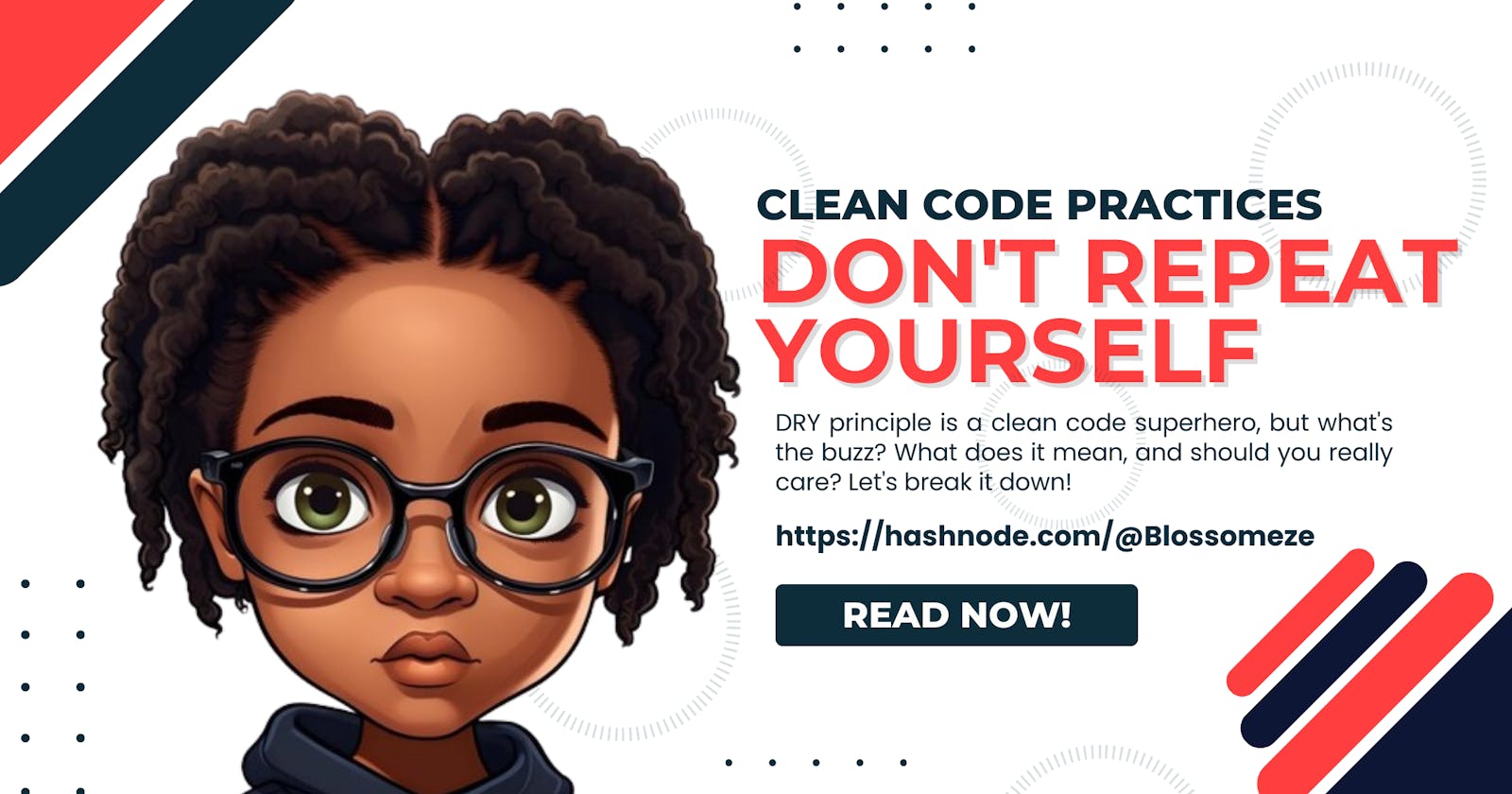Hey fellow coders! Today, we're diving into the world of clean code practices, and our superhero of the day is none other than "Don't Repeat Yourself" (DRY). Buckle up as we explore what the buzz is with DRY and why it is not just a witty acronym but a coding philosophy that can make our lives easier and our codebase simpler.
Understanding the DRY principle
DRY, or "Don't Repeat Yourself," isn't just a reminder not to spill coffee on your keyboard; it's a golden rule in coding. Imagine a world where every piece of code has a single VIP pass, and no duplicates are allowed. That's the DRY principle in action – no redundant code, just pure, unadulterated efficiency!
Why DRY?
Maintainability: By following DRY, we reduce the likelihood of bugs introduced due to inconsistent or duplicated code. When changes are required, we only need to make them in a single location, making maintenance more efficient and less error-prone.
Code Readability: DRY code is more readable because it avoids unnecessary repetition. Developers can easily understand the logic and purpose of the code, enhancing collaboration and ease of maintenance.
Reusability: One of the primary benefits of embracing DRY is the ability to reuse code. By extracting common functionality into reusable components or functions, we optimize development time and reduce the chances of introducing errors when reimplementing similar logic.
DRY in action
Let's examine a couple of examples to understand how the DRY principle can be applied effectively:
Code Duplication in Array Reversal:
const foods = ['🧀','🌶','🍉']; const animals = ['🦞','🐁','🐕']; const reverse = (input) => { return input.reverse(); } const revFoods = reverse(foods); const revAnimals = reverse(animals);Duplicated Validation Logic: Why repeat the validation hustle for each attribute when you can add a loop and keep the party going!
class Validator { private $validateAttributes = ['title', 'date', 'description']; public function validate(array $post) { foreach ($this->validateAttributes as $attribute) { if (!isset($post[$attribute])) { throw new \Exception('validation failed, no '.$attribute.' set'); } } } }
Conclusion
The DRY principle serves as a guiding light in the realm of clean code practices. By avoiding repetition and embracing reusability, we enhance the quality, readability, and maintainability of our code. The examples provided highlight how we can apply DRY in various scenarios, ultimately leading to more efficient and less error-prone software development. Remember, the path to clean code is paved with DRY practices. Embrace the principle, reduce redundancy, and unlock a more streamlined and effective development process.
So, dear coder, throw on your dancing shoes, follow the DRY rhythm, and let's write cleaner, snappier code together!
Disclaimer: The blog post is intended for educational purposes, assuming a basic understanding of software development principles.
